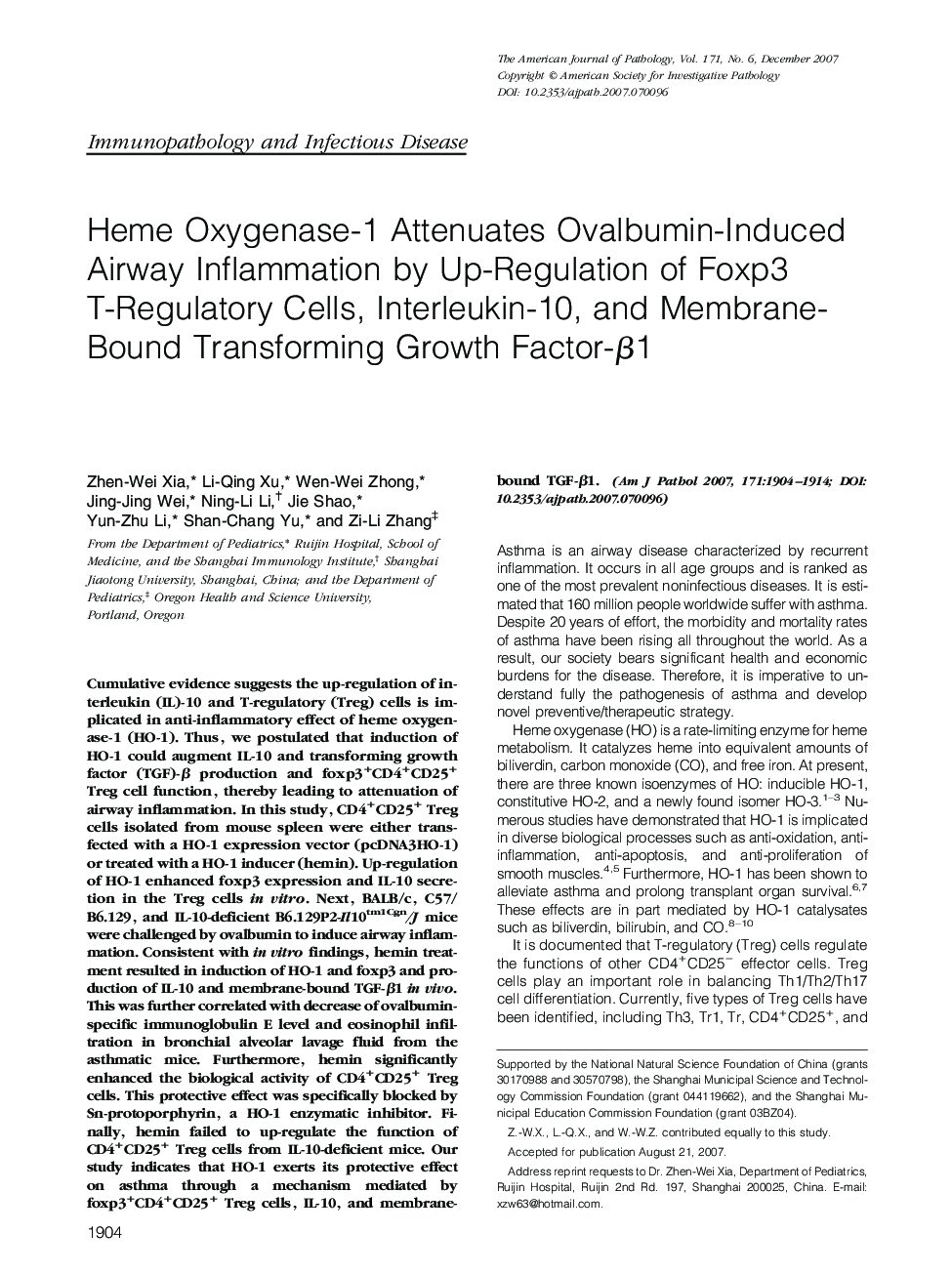| Article ID | Journal | Published Year | Pages | File Type |
|---|---|---|---|---|
| 2866012 | The American Journal of Pathology | 2007 | 11 Pages |
Cumulative evidence suggests the up-regulation of interleukin (IL)-10 and T-regulatory (Treg) cells is implicated in anti-inflammatory effect of heme oxygenase-1 (HO-1). Thus, we postulated that induction of HO-1 could augment IL-10 and transforming growth factor (TGF)-β production and foxp3+CD4+CD25+ Treg cell function, thereby leading to attenuation of airway inflammation. In this study, CD4+CD25+ Treg cells isolated from mouse spleen were either transfected with a HO-1 expression vector (pcDNA3HO-1) or treated with a HO-1 inducer (hemin). Up-regulation of HO-1 enhanced foxp3 expression and IL-10 secretion in the Treg cells in vitro. Next, BALB/c, C57/B6.129, and IL-10-deficient B6.129P2-Il10tm1Cgn/J mice were challenged by ovalbumin to induce airway inflammation. Consistent with in vitro findings, hemin treatment resulted in induction of HO-1 and foxp3 and production of IL-10 and membrane-bound TGF-β1 in vivo. This was further correlated with decrease of ovalbumin-specific immunoglobulin E level and eosinophil infiltration in bronchial alveolar lavage fluid from the asthmatic mice. Furthermore, hemin significantly enhanced the biological activity of CD4+CD25+ Treg cells. This protective effect was specifically blocked by Sn-protoporphyrin, a HO-1 enzymatic inhibitor. Finally, hemin failed to up-regulate the function of CD4+CD25+ Treg cells from IL-10-deficient mice. Our study indicates that HO-1 exerts its protective effect on asthma through a mechanism mediated by foxp3+CD4+CD25+ Treg cells, IL-10, and membrane-bound TGF-β1.
